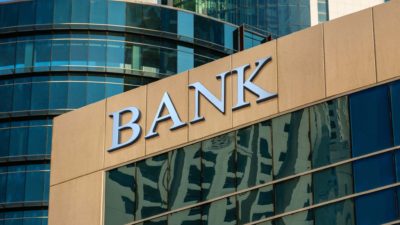The Commonwealth Bank of Australia (ASX: CBA) share price dropped 4% in August. Does that mean the CBA share price is a buy?
It's always nice to buy a business at a cheaper price than it was before. I think the CBA share price movement is particularly interesting considering the S&P/ASX 200 Index (ASX: XJO) actually went up by 2.2% last month.
August was a bit of a strange month for Australia. A lot of the country remained COVID-19 free. But Melbourne went into stage 4 lockdown whilst NSW saw a little bit of community transmission.
Obviously the biggest piece of news during August 2020 was the release of the CBA FY20 result.
FY20 result
I thought that Australia's biggest bank's held up remarkably well. Cash net profit only dropped by 11.3% to $7.3 billion. CBA said net profit was supported by strong business performance but it was impacted by a higher loan impairment expense because of COVID-19.
The loan impairment expense was $2.52 billion (up from $1.32 billion) including the $1.5 billion COVID-19 provision.
CBA's net interest margin (NIM), a key measure of profitability, declined by 2 basis points to 2.07%. This was expected because of the impact of lower interest rates. The official RBA interest rate declined to just 0.25% during CBA's 2020 financial year.
What about CBA's balance sheet?
A key aspect that usually sets CBA apart from the other major ASX banks is that it's strongly capitalised. Its common equity tier 1 (CET1) ratio was 11.6% at the end of FY20. That's comfortably above the 'unquestionably strong' benchmark of 10.5% set by regulator APRA. I think this is one of the main reasons the CBA share price hasn't fallen further.
I think that CBA has proven to be a high-quality bank through this difficult COVID-19 period.
At 31 July 2020 it was providing COVID-19 related loan deferrals for 135,000 home loans (8% of total accounts) and 59,000 business loans (15% of total balances). This was down from 154,000 home loans and 86,000 business loans at the peak.
I'm sure that CBA will hoping that the vast majority of these deferred loans can go back to a normal payment schedule soon, even if it's just interest only payments.
CBA is one of those ASX shares that does need the overall economy to do well for its profit to grow. Though its faster-than-system home lending growth of $18.4 billion was attractive.
Is the CBA share price a buy?
I think it speaks volumes of the strength of CBA that it was still able to declare a final dividend of $0.98 per share, which was on top of a pre-COVID-19 interim dividend of $2 per share paid at the start of 2020. A strong dividend is good for the CBA share price.
If I had to pick one of the big ASX bank shares for dividends it would be CBA because I think its profit is likely to be the one least affected. That should mean its dividend is able to hold up the best through the current period.
It's difficult to say when profit growth will return. It's even harder to say when CBA's profit will return to 2019 levels (excluding royal commission remediation).
The CBA NIM could be under pressure for a few years with the RBA suggesting that the Australian interest rate isn't going to be increased for a while. Bad debt levels may be elevated for a while considering all of the long-term impacts of COVID-19 will take a while to flow through the economic system.
A normal economy takes a while to recover from a typical a recession. The economy isn't like a share price which can go up 10% in a day. A global pandemic that has halted several important sectors like international education, travel and tourism could mean the Australian economy takes longer to get back to normal.
Perhaps the CBA share price was a buy during May for bank investors. But ever since we learned of the jobkeeper overestimation, it seemed the short-term buying opportunity for CBA shares had passed. I don't think you should focus on past CBA dividends, another dividend cut may be on the cards in six months.
A different opportunity
I'd rather buy investment bank Macquarie Group Ltd (ASX: MQG) over CBA for dividends and growth.







